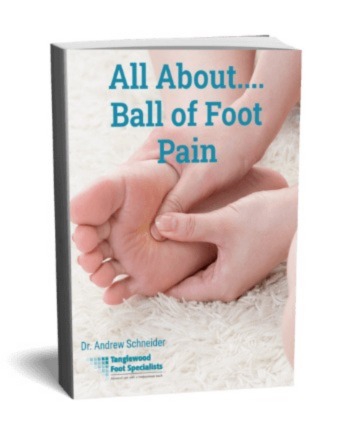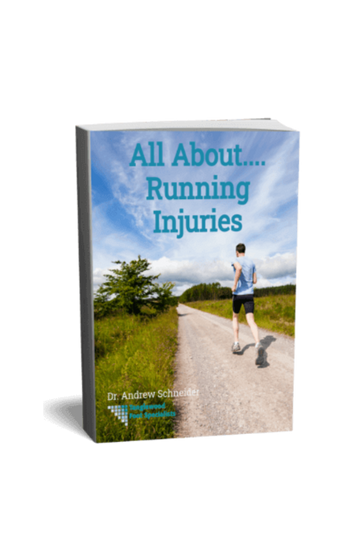According to the American Podiatric Medical Association (APMA), over 75% of Americans have suffered from foot pain at one point in their lives. That's a truly scary statistic. And it's one that should make people stop and think.
Luckily, it has! Inspired by this staggering statistic, one podiatrist is trying to put a stop to foot pain for good. His solution? A so-called miracle brace. And it's meant to could correct a physical deformity that's responsible for so many painful foot conditions in this country.
A Brace that Could Change Everything ![a foot and ankle brace]()
Having spent years treating patients for conditions like plantar fasciitis and tendinitis, Dr. Patrick DeHeer learned firsthand that patients often don't follow treatment plans. Especially when they include daily stretching. As a result, their feet keep hurting. And they wonder why they never feel better!
Now, we could lecture all we want. But words are often less powerful than actions. So, to help close that compliance gap, the doctor wanted to find a treatment protocol that was easy to follow. To that end, DeHeer decided to get to the root of the problem. His focus? A condition known as equinus, in which the ankle joint is limited in its ability to bend.
What is Equinis?
This is a condition in which your joint lacks flexibility. As a result, it's hard to move your ankle up and down, between your toes and shin. You seem to develop this condition when you have a tight Achilles tendon or calf muscle. As a result, some people are born with this condition, but others develop equinis over time. Men and women are at equal risk, and it's possible for one or both ankles to be affected. Regardless, the condition impacts your range of motion. So it may lead to injury, especially for runners. (More on that shortly.)
Equinis changes your range of motion. But people don't usually acknowledge their bodily limitations. As a result, people with equinis have to compensate for their compromised mobility. And when they do? Other parts of their body can take on too much pressure. As a result, this condition ups your risk for heel pain, leg and calf cramps, Achilles tendinitis and ball of foot pain. (The fallout will depend on how your body moves when you compensate.)
Over time, you'll have a higher risk for arthritis in the middle of your foot. Your arch may collapse, and you may develop foot deformities such as bunions or hammertoes. Even shin splints are more common for people with equinis. So it's important to address this condition, especially if you're an active individual.
Equinis, Dorsiflexion and Running ![examining ankle dorsiflexion]()
As we mentioned, equinis can limit your body's dorsiflexion. (Remember, that's your ankle, foot and toes' ability to bend backward and forward.) Now, that's a problem for anyone who wants to stay active. But it's especially crucial for running.
Why? The joints in your feet and ankle are critical to your runs. And the way you move them can reduce or increase your risk for a running injury.
You see, when your ankle has its full range of motion, you can dorsiflect in a way that lets your foot strike more fully absorb your landing impact. It also keeps your foot on the ground for a shorter period of time, making you more efficient when you train.
Unfortunately, with equinis, your ability to dorsiflect us compromised. As a result, your running format is, too. So you're more likley to get hurt while you run. Thankfully, DeHeer wants to change all that.
The Plan to End Equinis for All Patients
When introducing his proposed brace, DeHeer explained to the Medical Device and Diagnstic Industry journal, "Studies show patients with equinus have higher incidence of foot and ankle pain." As such, he says, "It has accurately been termed ‘the root of all foot evils’ for a reason. Management of equinus either conservatively or surgically has been shown to reduce foot and ankle pain.” Furthermore, as we just explained, it can also reduce the rates of running injuries.
To that end, DeHeer developed a brace that stretches the two calf muscles that contribute to equinus. Known as the Equinus Brace, DeHeer believes his device will help address Achilles tendonitis and plantar fasciitis. (Plus, it could help with more than 30 other foot and ankle disorders, he notes.) And the best part of his brace? You'd only need to wear it for one hour each day. That's a big contrast to other devices, because you need to wear most splint all night if you want to see any results.
A brochure for the device explains how it works. "It is the only brace for equinus that extends above the knee, maintaining the knee in full extension while dorsiflexing the ankle. A patented toe wedge isolates the dorsiflexion force to the hindfoot as well as externally rotates the tibia to fully extend the knee. Adjustable ankle hinges promote gradual, safe stretching." The brace is also covered by medicare and most insurance plans.
Brace Free Ways to Cope with Heel, Foot and Ankle Pain
This brace certainly sounds like a valuable tool for busy patients who can't follow stretching protocols. And we are all about minimally invasive solutions to foot, heel and ankle pain.
That's why, in our office, we will often recommend supportive devices like orthotics to help reduce structural foot pain. Why do we work with these custom medical devices? Well, sometimes, in the right instances, braces are useful.
But they aren't a lasting solution. And they can't always prevent foot pain. As a result, we also advocate for early intervention and minimally invasive treatments--like stretching--that can help your body stay in top working order.
Sounds like a plan you can get on board with? Make an appointment to stop by and talk about preserving mobility and ending foot pain. By coming in to my Houston podiatry office at the first sign of foot pain, we can work together to develop easy-to-follow, inexpensive treatment plans.




























